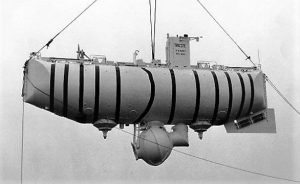Intermodal transport
History and competition have tended to produce segmented and non-integrated transport systems. Each form of transport, particularly operators have tried to exploit their own advantages in terms of cost, service, reliability and safety. Operators try to retain business and increase revenues by maximizing the line traffic under their control.

Related topics
Sustainable mobility, air transport, rail transport, maritime transport, multimodal transport
What is intermodal transport?
Intermodal transport is the movement of loading units through a combination of means. This transfer between transport methods takes place without the need for opening, minimizing cargo handling.
Characteristics of intermodal transport
Among the main characteristics of intermodal transport, we can mention the following:
- Intermodal transport guarantees companies a lower cost than other possibilities.
- It generates more security levels for companies.
- General plus sustainability.
- Loads are not manipulated by third parties.
- There is an improvement in the infrastructure through regulatory updating that is reflected in logistics platforms, in the combination of means of transport and in a greater freedom of administration that is given as a result of legal requirements.
- There is a rethinking of logistics strategies in companies.
- There is greater road safety.
- Costs and environmental impacts are reduced.
- Tariffs are lower and predictable.
- There is flexibility in the loading and unloading of different goods.
- There is a reduction in handling costs.
- It provides reliability, capacity and sustainability.
History of intermodal transport
Intermodal transport existed before the Second World War. Between 1870 and 1950, an excellent rail network was built, and extensive use was made of waterways. Until the 1960s, rail and water transport accounted for a high percentage of the total, during which time the purest intermodal transport was practiced. This happened because there were not enough roads to transport goods. But as happened in many parts of the world, there was a breakthrough in road transport from the 50s and gradually, it was absorbing most of the traffic. Today it is considered that more than 90% of transport is done by truck.
In the seventies and eighties, intermodal transport could not be carried out efficiently almost anywhere in the world, because there were many operational problems. In the past, there was a lot of handling, high costs and risks of breakdowns. Storage was almost always required, but the total costs of road transport, including infrastructure, were very high. This happened in many countries of the world and although it seems obvious, it can be said that it went almost unnoticed, until around the middle of the 50’s, an American truck driver, Malcolm McLean, started with the idea of intermodal transport.
Types
- Combined transport: where the means of transport physically overlap. It allows goods to be transported under a fractional liability regime. We can mention within this type of intermodal the following examples:
- Ferroutage: these are lorries that go on railway wagons.
- Transroulage: trucks on ships and then transfer the vehicles by road.
- UFR systems: a semi-trailer is transported inside a railway wagon.
- Segmented transport: this is where transport documents and modes of transport are used that need to move goods between a point of origin and their destination. Some contracts made in this type of transport are verbal.
- Multimodal transport: is given by two different means of transport from a place where the multimodal transport operator takes the goods until delivery. The multimodal transport operator is responsible for drawing up a contract and assumes responsibility as the carrier.
Advantages of intermodal transport
Among the advantages we can mention the following:
- There is a reduction in transport times as they are faster.
- Loading and unloading are faster.
- There is no need to store products in intermediate areas.
- It provides new business opportunities for non-traditional exporters.
- Less risk of theft.
- Better tracking of goods.
Disadvantages
- There is a possibility that overall reliability may be diminished, mainly in rail transport as they are more susceptible to delays due to bad weather or lack of adequate equipment.
- There is the possibility of damaging loads because they must be in constant movement when they pass from one medium to another.
- Infrastructure costs are high compared to others. The use of containers requires carriers to handle large cranes and a human team to handle loads.
Importance
Intermodal transport is important mainly for commerce as it combines a number of ways of carrying loads more efficiently, making goods move from one place to another by sea, land or air. Thanks to the enormous amount of new technology, trade benefits by accelerating and increasing the transport of its cargoes.
Examples
Some examples of companies that work with this type of transport are:
- Fixemer: combine traffic with intermodal transport using various means of transport.
- Vlex: Spanish company that works with intermodal transport.
- Agility: company that has had great success in its transport combined with an adequate integrated logistics.
How to cite this article?
Briceño V., Gabriela. (2019). Intermodal transport. Recovered on 23 February, 2024, de Euston96: https://www.euston96.com/en/intermodal-transport/









